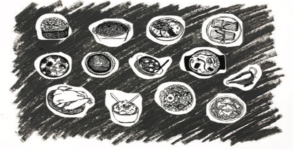Living on campus for the first two years at Mills, I built great bonds, both with my immediate living community and with the larger campus as a whole. However, since last year — my first year as a commuter — it’s been challenging to find where I belong.
The spike in tution coupled with lengthy and unexpected furloughs at my father’s company caused me to move off campus in order to continue my education at Mills. It was difficult to learn the ropes of morning traffic, establish my favorite parking location and keep my old on-campus friends as fully integrated into my life as they once were.
I struggled to navigate the “first-come, first-serve” locker policy and the clarity of the computer lab and kitchen space and ultimately resulted in using my car as a dual storage/closet space. If there had been a notice from the College or the OSA commuter assistant to let students know what resources are available as a commuter, this early experience might not have made things seem so hectic.
I initially participated in the Division of Student Life’s Belonging Initiative as a contributing writer to the collective story. When the initiative launched as a campus-wide campaign, I made sure to participate, as my experience as a new commuter transformed my previous confident connection to Mills when I was a resident.
Through my participation in the Belonging Initiative, I realized that it was not necessarily that my connection was weak, but the accessibility to information and assistance had changed. It is truly difficult to transition from a former residential student to a commuter, to navigate the campus through a new lens.
In my last year at Mills I feel there is not much of a “commuter community” at large, but many smaller nests built underneath the umbrella term. There are those who work and only come to campus for classes, those who are involved in clubs and organizations and those who take up long study hours in the library, Tea Shop or commuter lounge.
It would be great to have a stronger sense of commuter community, and that might begin with improving the initial communication with commuter students. Maybe this could take place in smaller community meetings where information could be shared — regarding, for example, events on campus that might affect traffic light delays, parking and lot closures. Or carpool groups could be formed to limit the number of cars on campus.
The outlook on my experience as a commuter has shifted due to the bonds I have maintained with the volleyball team and campus clubs and organizations. However, I am left to wonder about the other commuters who may not find ways to feel like a part of the campus the way I did.
I think it would be great to re-visit the diversity of students who commute: mothers, fathers, partners, spouses, full or part-time employees, former residential students and many obtaining post-graduate degrees and certifications.
It’s great that the College offers support for residential students transitioning in, but I wonder where additional support can be offered to those who come and go daily just as the faculty and staff do. Ice cream socials may be fun, but I think that small community discussions may help shed light on ways to help more Mills students feel as though they belong.
This piece is not to belittle the work that is currently done, but to broaden the views of where things can go. At the end of the day, everyone should have the same knowledge of the campus whether they reside or commute.


